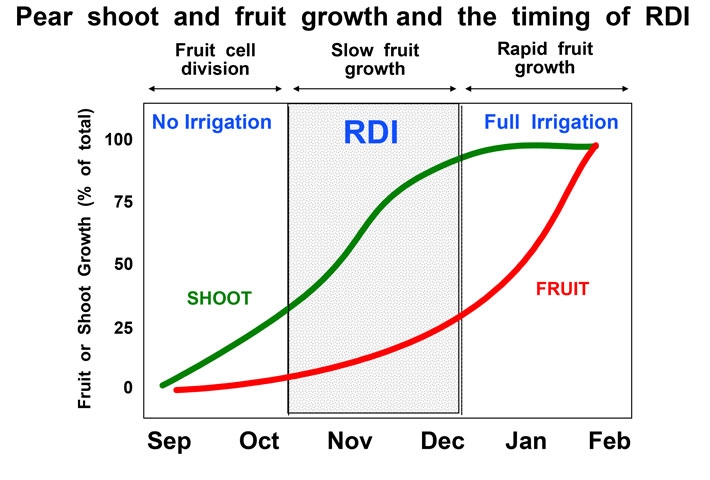Regulated deficit irrigation (RDI) has been established as an effective technique to control vigour and maintain yield, with the added benefit of lower water use, and is also discussed.
Regulated deficit irrigation (cont from last issue)
Slow fruit growth
During this period, fruit growth is slow and shoot growth is rapid (Fig. 1). Water stress will significantly reduce shoot growth.
Irrigation should commence when the soil has dried out in the fibrous root zone to 400 kPa in a clay loam.
The trees are irrigated with greatly reduced volumes of water compared to that which would normally be applied.
Irrigation replacements of less than 30 per cent of crop water requirement are recommended.
Rapid fruit growth
This stage commences in early December for Williams’ bon Chrétien and mid to late December for Packham’s Triumph.
The fruit is growing rapidly and the tree now needs ample water to maintain this growth.
Water stress must not occur during this final period of fruit growth.
Irrigation replacements of 100 per cent of crop water requirement are recommended.
Soil moisture in the middle of the wetted fibrous root zone should not exceed 40 kPa in sandy soil or 60 kPa in a clay loam.
A long irrigation event, or several irrigations at short intervals, may be required to re-wet the root zone in December, particularly if rainfall has been low.
Post-harvest
Many orchardists in the Goulburn Valley have implemented post-harvest irrigation deficits similar to the RDI strategy described above.
Post-harvest cut-off (cont next issue)
See this article in Tree Fruit Feb 2020






















